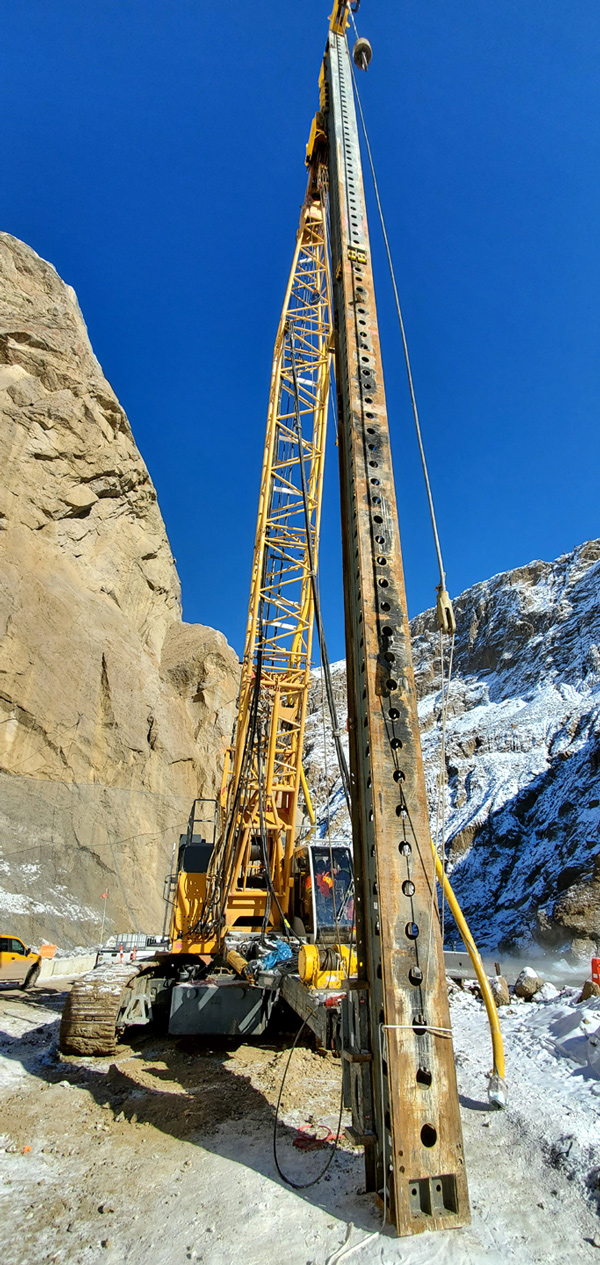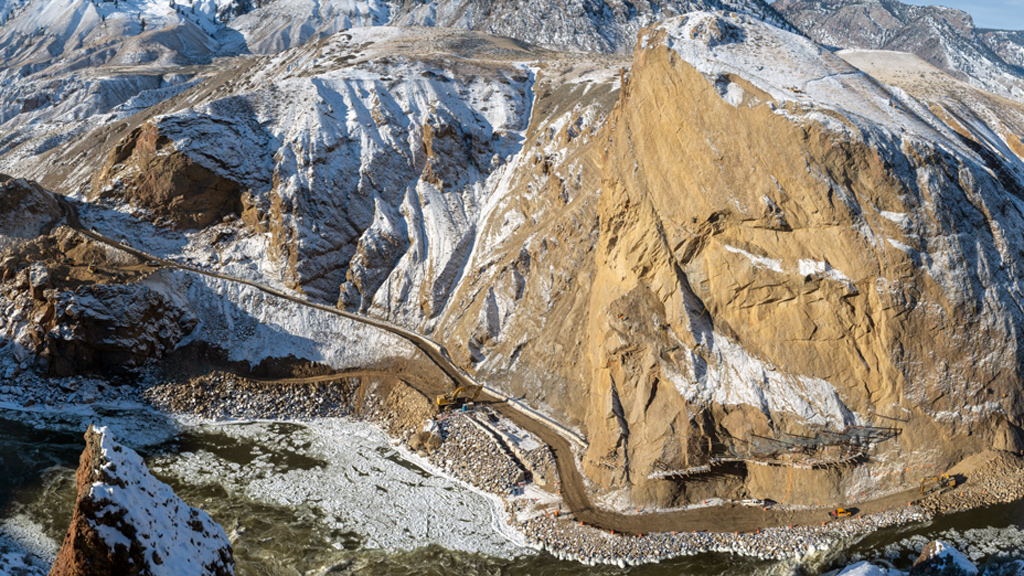Construction crews have begun laying the groundwork for a 100-metre-long covered highway for salmon that is to be installed along the Fraser River at the site of the Big Bar landslide north of Lillooet, B.C.
The structure, aptly called a fishway, will enable salmon and steelhead populations to swim northward through a concrete and steel tube to reach their spawning grounds in the upper part of the river.
A landslide in the area in 2018 dropped 110,000 cubic metres of rock into the river, blocking critical passage for the fish.
Crews from Kiewit have been at the site for a couple of years now. The company was awarded a $176-million contract from the federal government to deal with rockfall protection measures, build access roads to transport heavy equipment to the site, remove debris from the river and build a temporary natural fishway, as well as build the permanent fishway and help transport fish while the structure is under construction.

Gwil Roberts, Big Bar landslide response director for the Department of Fisheries and Oceans Canada, says crews are presently preparing a 150-metre stretch of embankment where the future fishway is to be installed. The work entails excavating the area and placing rip-rap and shot rock to protect the embankment.
“That’s been a big challenge, and a bit of an ironic challenge, because in a world where you’re surrounded by rock, getting the right type of rock and the right size of rock has been difficult. We’ve been laying down rip-rap of the right dimension and size and measuring its hardness because it has to be of a certain quality.”
The rock is being extracted from a nearby area known as the razorback. As luck would have it, the razorback, essentially a large rocky area, needed to be partially carved away in order to allow the proper grade for an access road.

The actual design of the fishway is still being completed but the plan calls for a sequence of 14 concrete cells to be placed end to end and joined together. Baffles are installed in the cells to regulate water flow.
“Those cells and baffles regulate the flow of the water and they slow down the velocity of the water when it enters the fishway,” explains Roberts. “As a result, the fish are able to move upstream through the fishway, where outside of the fishway, the river volume and velocity would be too high for passage.”
To build the fishway, the concrete cells will be cast off-site and hauled to the river and then fitted together. It sounds easy, but the exercise will be tricky as the line of the fishway follows the curve of the canyon.
“It needs to hug fairly close to the canyon wall so it bends as it heads from south to north,” says Roberts.

The fishway itself will be covered to protect fish from any falling debris. In addition to the precast concrete cells, steel components will also be fabricated and brought to the site to be installed. One of the steel structures is a rack which keeps debris, logs and larger rocks from entering and blocking the entrance.
The landslide resulted in boulders the size of three-storey houses and other debris tumbling into the river, narrowing the water flow and creating a five-metre-high waterfall which affected salmon that swim as many as 1,000 kilometres from the Pacific Ocean near Vancouver to their spawning grounds in the north.
To get heavy equipment to the site, an 800-metre access road had to be built. A variety of heavy equipment was brought in, including excavators ranging from 25 to 90 tonnes, excavator-mounted drills, 30-ton rock trucks and a telehander. The rock slope also had to be stabilized to make the area safe for crews and a steep embankment had to be built so heavy equipment could get to large boulders in the river.
The fishway is expected to be completed by May 2022.
A number of novel ways have been used to transport fish upstream while the project preparations are underway. Last year, a so-called salmon cannon that uses pressurized water and tubes to ferry fish past the slide site was deployed. This spring, officials plan to capture fish and transport them by truck. A boulder field is also being created to slow the flow of water in places so fish can take a break on their travels.
The fishway was deemed to be the most cost-effective and logical permanent solution to the problem, according to Roberts.
“If we were to continue to drill, blast and keep digging away at the rock, there was no certainty of the outcome.”
The project has been a challenge. To get heavy equipment to the area, machines often had to be disassembled and transported to the site.
Roberts says overall it has been an interesting project.
“It has a lot of different moving parts. I think we’re very fortunate that we have excellent teams working here. The Kiewit group are very, very good and very professional. It’s very much a team effort.”











Can’t wait for Covid restrictions to end so this Yankee can once again visit your Beautiful Province. Your fish passages sort of resembles the one at Hellsgate, right? Praying the the US and Canada can work together to restore our salmon and Steelhead. If we could only take town the 4 dams on the Snake river…